Nau mai Urupukapuka,
ancestral home to Ngati Kuta and Patukeha ki Te Rawhiti and a unique ecology found nowhere else in the world.
Te Ao Māori, or the Māori world view, has a direct link to whenua, the land. We are its descendants, and the gods are our ancestors. Whakapapa, or genealogy, connects celestial beings with all living things. Storytelling, mythologies, legends, history, knowledge, tikanga (custom), and philosophies passed from generation to generation, helps Māori understand their place in the world and their relationship with nature. As such, Māori view people as part of the environment, not masters of it.
![]()

This project encourages visitors to explore and experience the island through a Māori lens. A sense of tūrangawaewae (belonging/connectedness to a particular place physically and spiritually) is created through a journey between three pouwhenua (markers of significance). The pouwhenua act as thresholds into the spiritual realm of Urupukapuka Island and help connect visitors with the Māori spirits of Papatūānuku (earth), Tāne Mahuta (forest) and Ranginui (sky). As visitors engage more deeply with the island they will gain a greater appreciation of the work of Project Island Song and the importance of the island to local hapū.
To design from a place of tension — wanting to steer clear of tokenism and the risk of appropriation — was to draw upon Te Ao Māori, its storytelling, mythology and relationship with the land ecology; to inspire architectural interventions or gestures that focus on narrative and experience. How can we embody the spirit of Urupukapuka so that visitors can appreciate the island as a living being and connect with its flora and fauna?
To design from a place of tension — wanting to steer clear of tokenism and the risk of appropriation — was to draw upon Te Ao Māori, its storytelling, mythology and relationship with the land ecology; to inspire architectural interventions or gestures that focus on narrative and experience. How can we embody the spirit of Urupukapuka so that visitors can appreciate the island as a living being and connect with its flora and fauna?
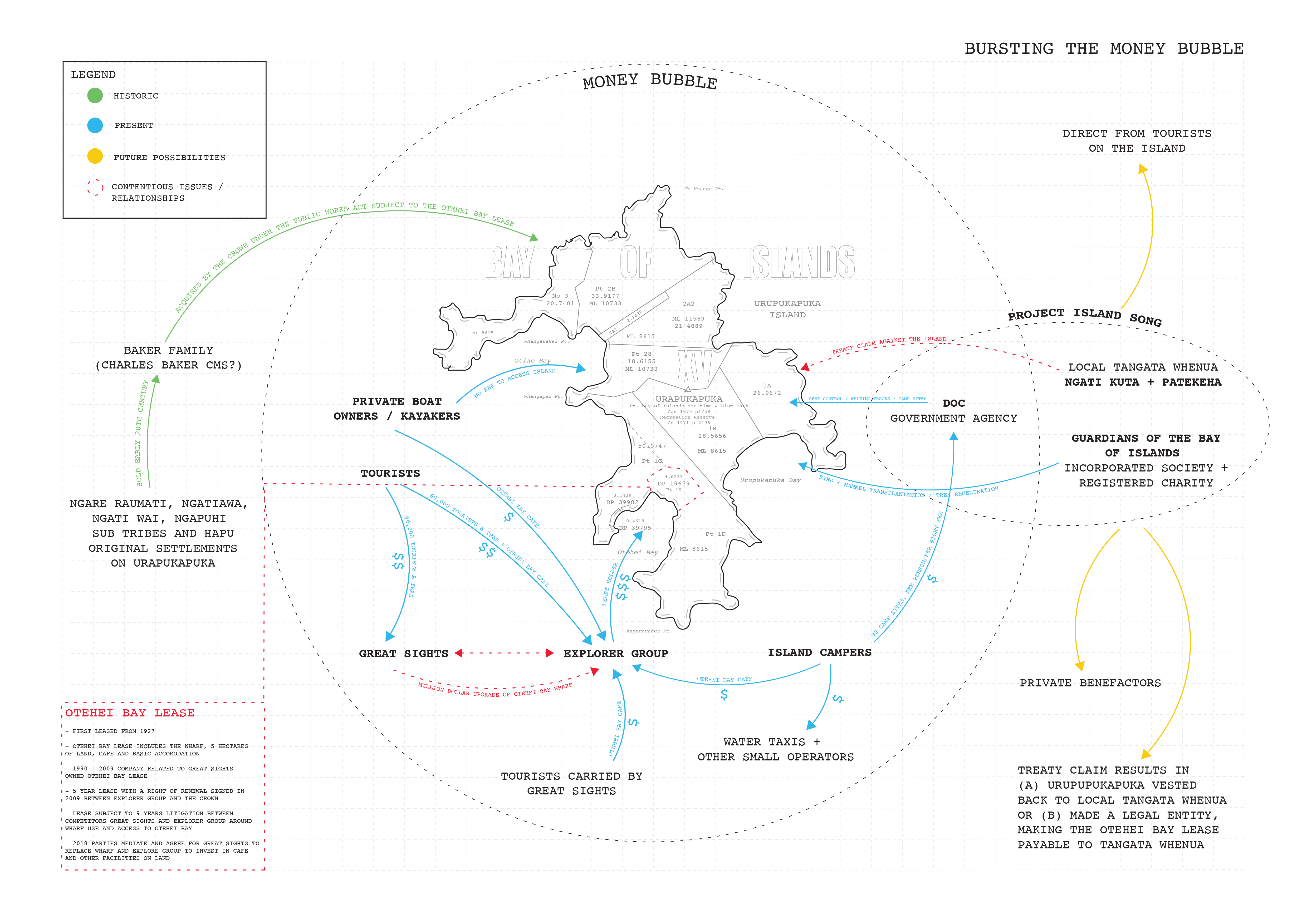
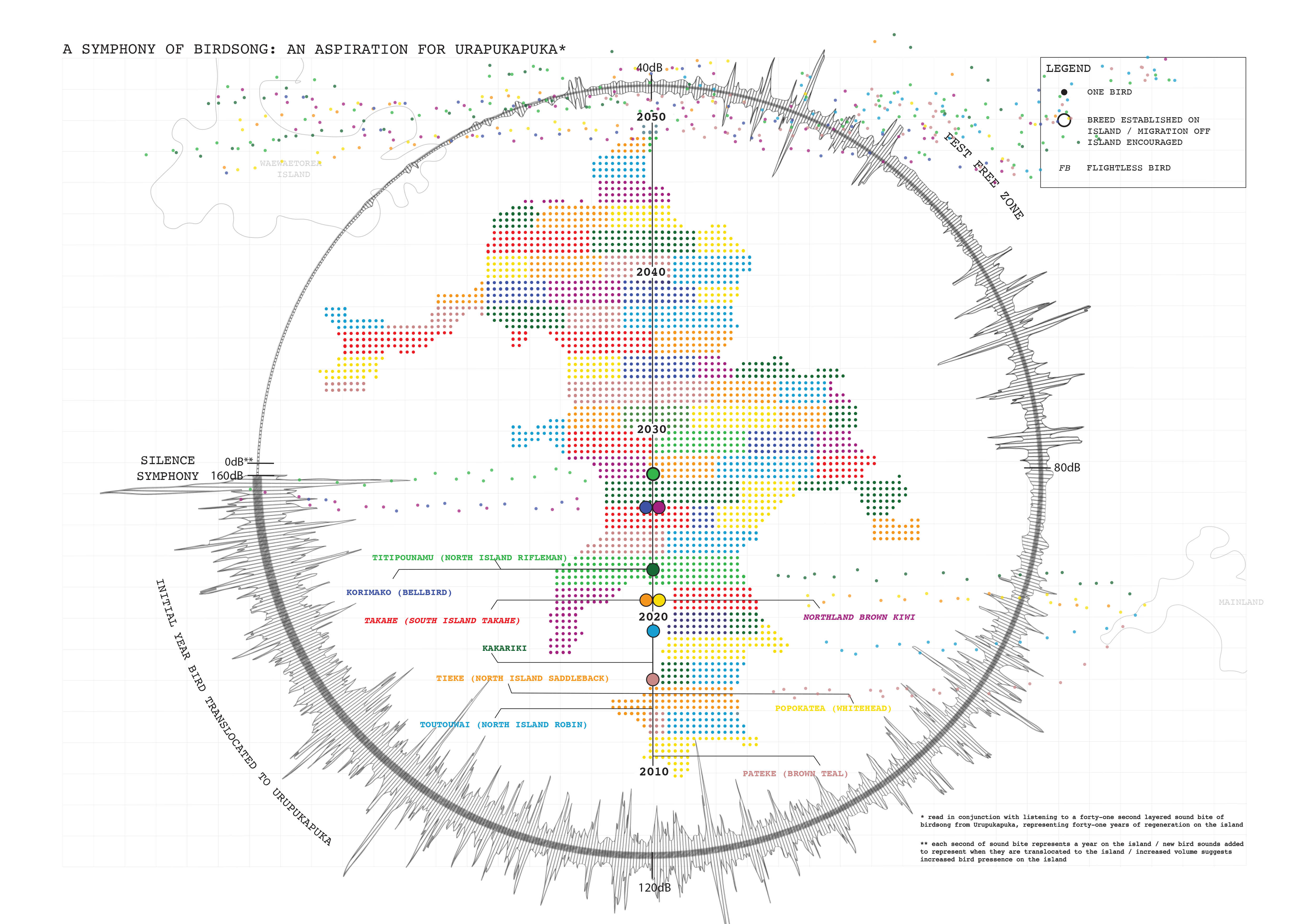
The Design
The ten metre tall markers are visible across the island and from the sea. Pilgrimage and pause was an important design consideration, using movement and reflection to create a deeper experience for visitors. Experimentation with material and form was crucial in pushing the atmospheric qualities of the island. To connect the spirituality of the island to its ecological elements, Project Island Song conservation efforts are incorporated into the pouwhenua. This acts to consolidate a sense of guardianship over the island. Papa/the earth structure, speaks to the notion of motherly protection and the island being protected from predators. Tāne/the ponga structure, speaks to revegetation and weeding. And Rangi/the mirror structure, speaks to the reintroduction of native species, birds in particular. All this information is embedded in the materials of the structures – pressed into the rammed earth, carved into the core of the ponga spiral and etched into the mirrored acrylic.
The ten metre tall markers are visible across the island and from the sea. Pilgrimage and pause was an important design consideration, using movement and reflection to create a deeper experience for visitors. Experimentation with material and form was crucial in pushing the atmospheric qualities of the island. To connect the spirituality of the island to its ecological elements, Project Island Song conservation efforts are incorporated into the pouwhenua. This acts to consolidate a sense of guardianship over the island. Papa/the earth structure, speaks to the notion of motherly protection and the island being protected from predators. Tāne/the ponga structure, speaks to revegetation and weeding. And Rangi/the mirror structure, speaks to the reintroduction of native species, birds in particular. All this information is embedded in the materials of the structures – pressed into the rammed earth, carved into the core of the ponga spiral and etched into the mirrored acrylic.
Papatūānuku/Earth Mother
A feeling of depth is created between the earth and the sky, denoting the separation of Papa and Rangi and the emerging out of the darkness into the light.
Tāne Mahuta/God of the Forest
“Tane lay down on his mother, facing up to his father. He braced, and with his feet gave a strong kick. His father spiraled so high that he could not return.”
A stacked ponga log spiral sitting in a gentle scoop in the land reflects Tane’s arched back in the earth as he kicked his father away.
Ranginui/Sky Father
Once separated from Papa, “The world began to flood as Ranginui began to weep, their mother lying on her back and looking up at her husband would only cause their father never ending sorrow.”
Rangi’s desire to be reunited with Papa informed the use of mirrored panels, and a mirrored bowl in the centre of the pouwhenua to catch the tears of Rangi and bring the sky down to the earth in its reflection.
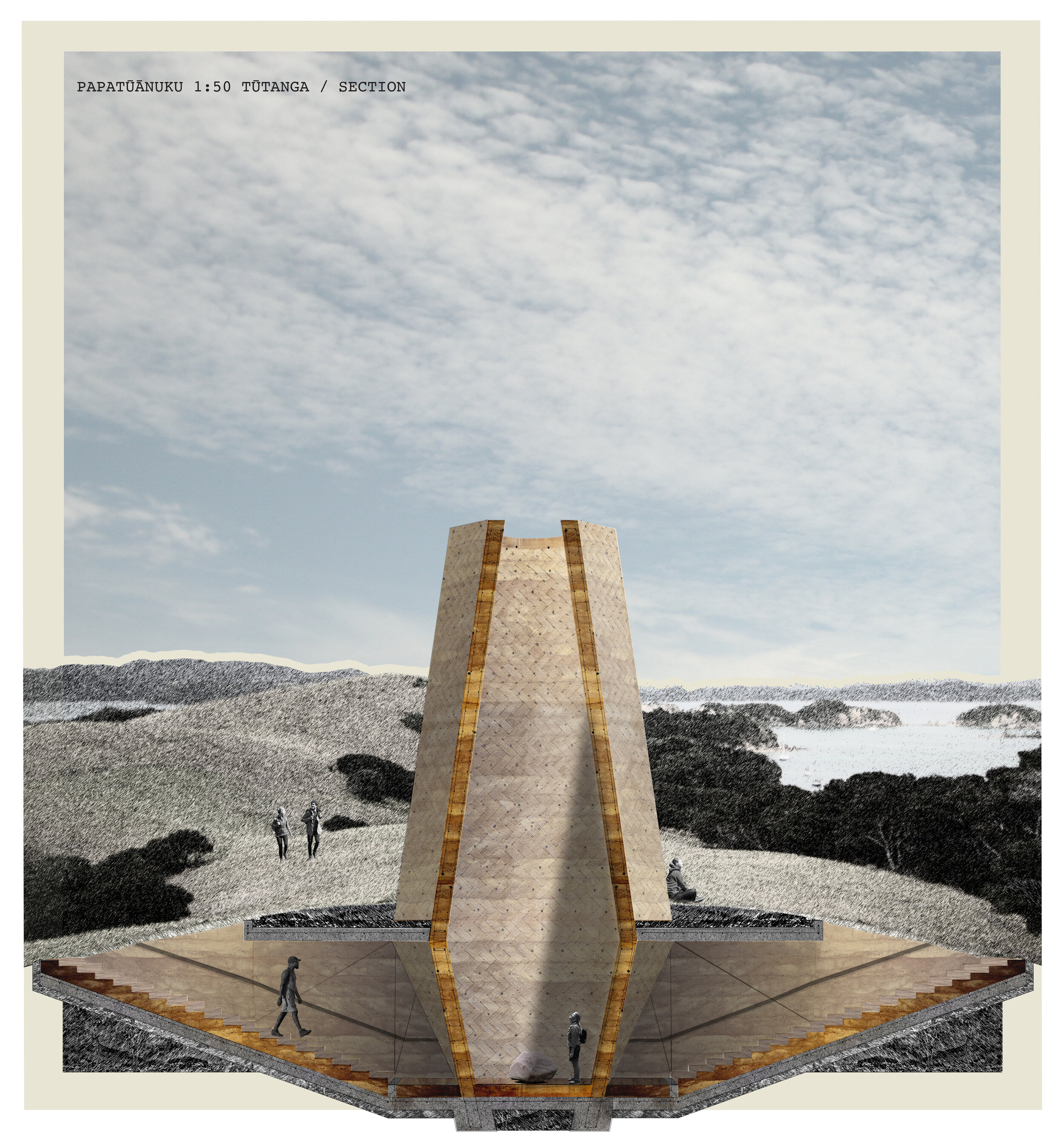

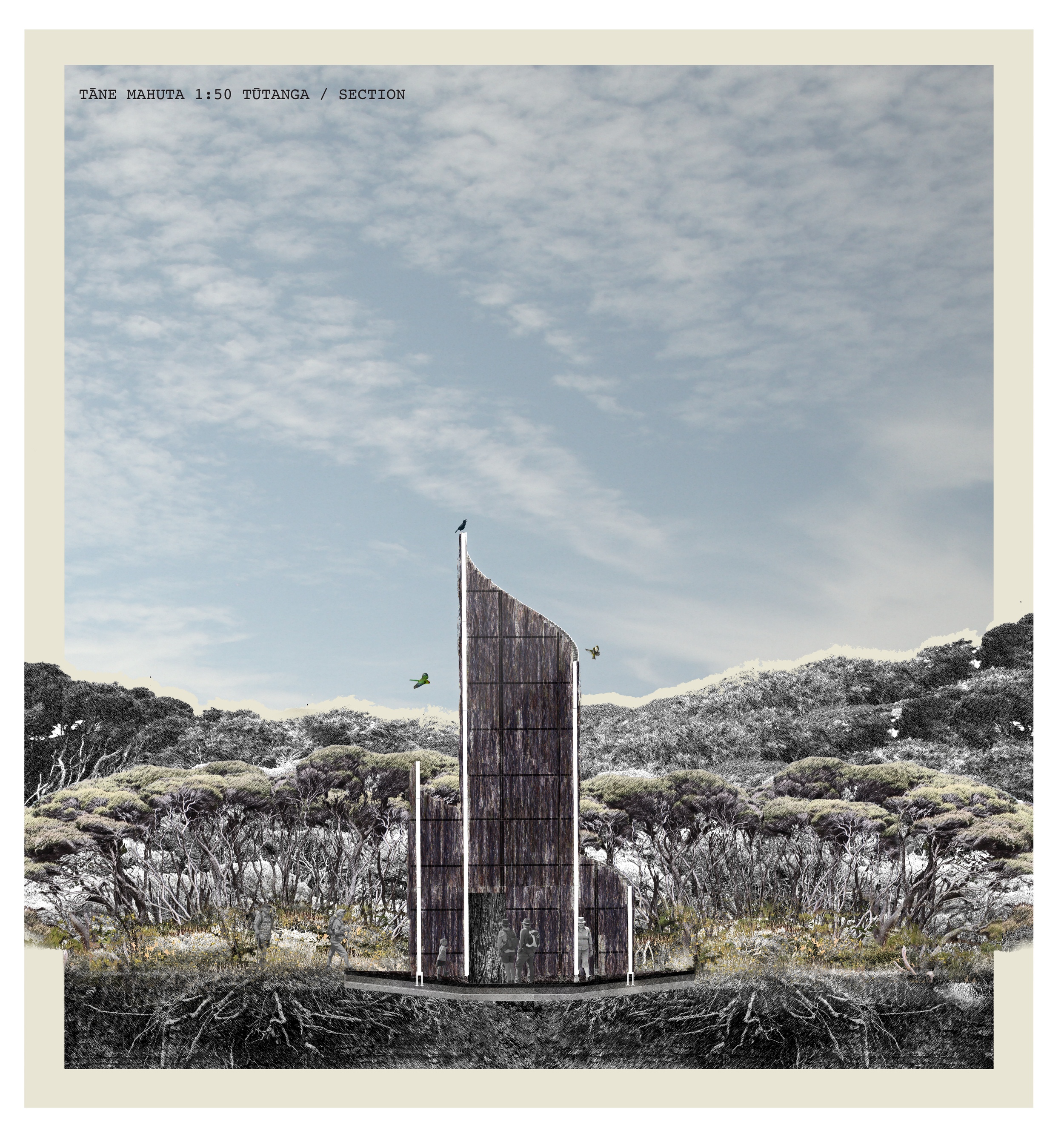





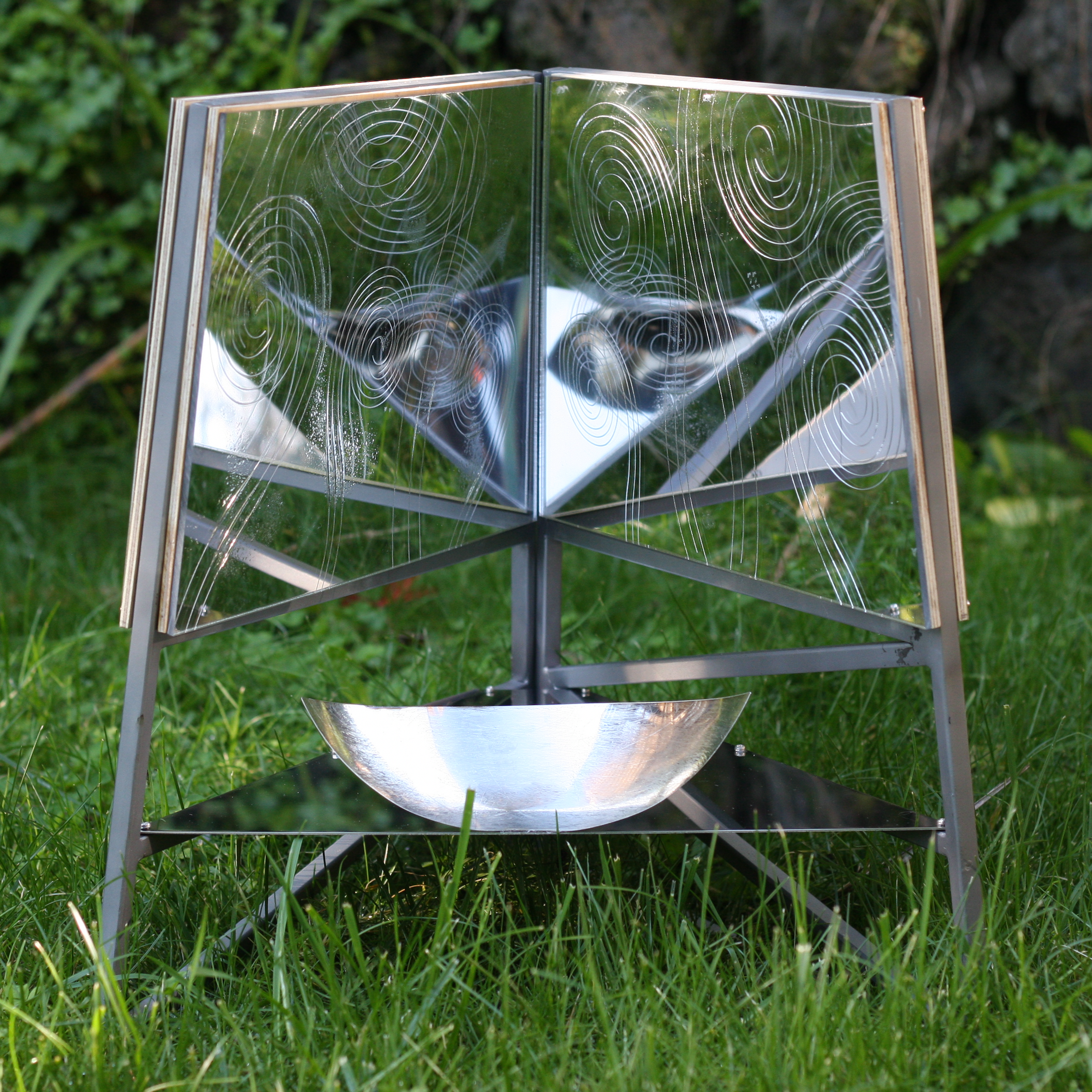
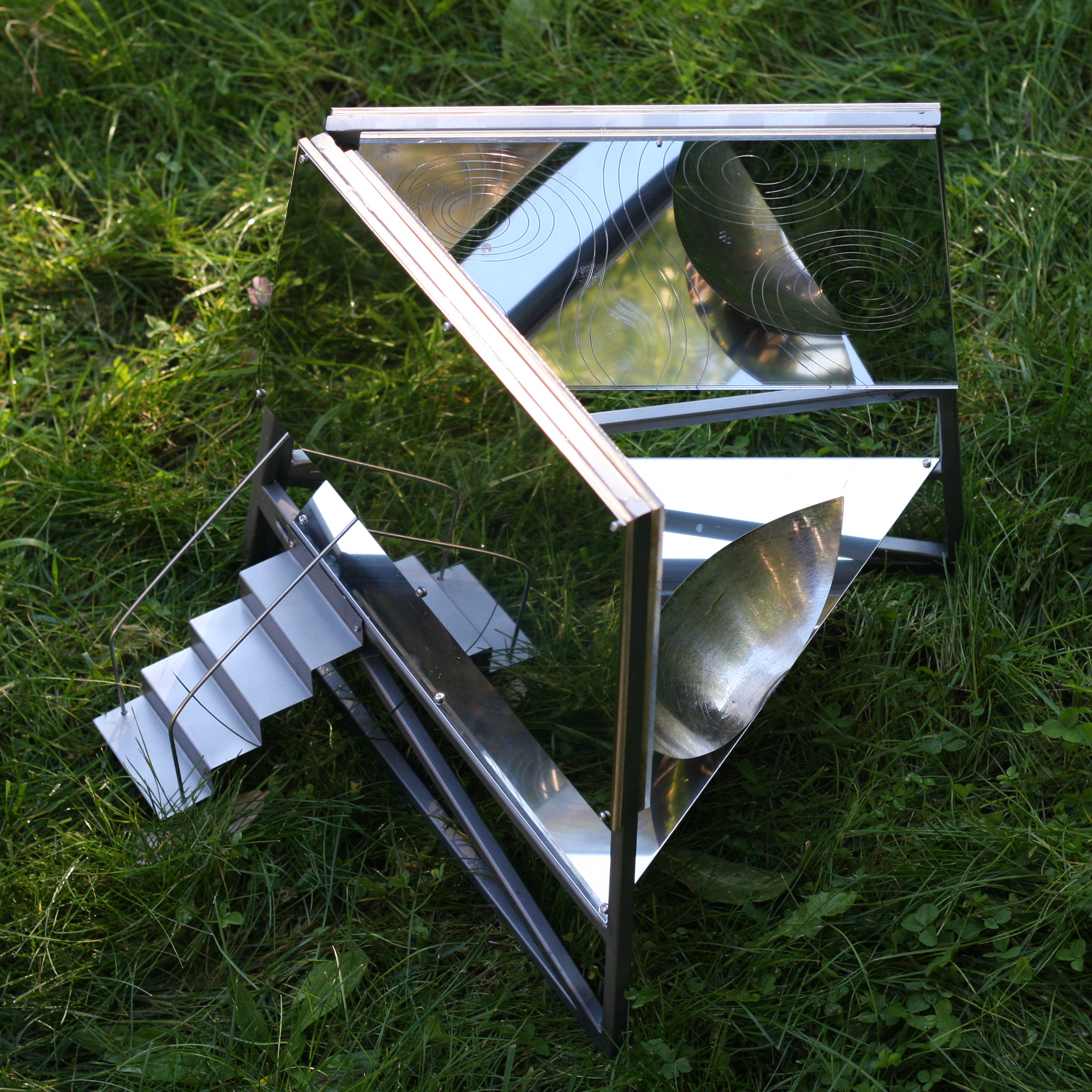
Leith Macfarlane is an ex-lawyer and mother of 3-year-old Monroe. She is currently in her third year of the Bachelor of Architectural Studies at the University of Auckland. This project was in response to the Design 5 brief to help Project Island Song generate engagement and learning on Urupukapuka Island in the Bay of Islands.
